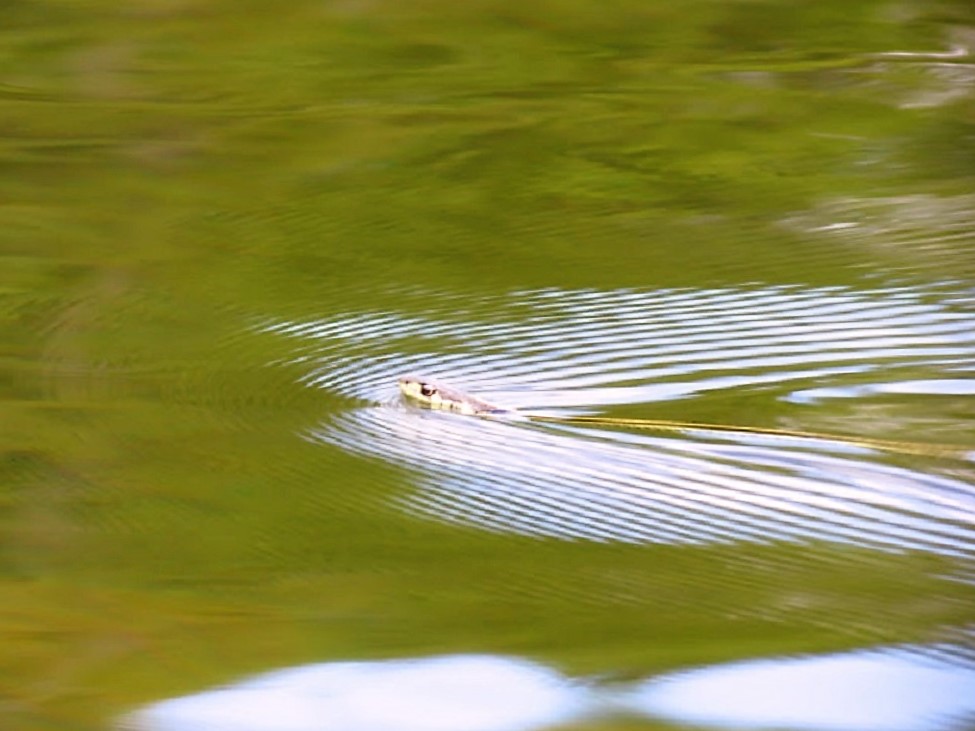
The Western Terrestrial Garter Snake is a frequent visitor to many backyards throughout its range. The subspecies of western terrestrial garter snake found in the Pacific Northwest is commonly called the wandering garter snake.
Like all other garter snakes, the western terrestrial garter snake has strongly keeled scutes giving it a dusty, dull appearance. The colour patterns vary throughout its range. In general, this snake has a gray body with a light stripe that is yellow to an orangery red down its back and a matching stripe running down each side. It also usually has a pattern of small dark spots, all over its back and overlapping the stripes. This gives the stripes a zigzag pattern. Its belly is pale.
It is best not to handle this garter snake. When a garter snake is handled, it will thrash its body about, spiralling over and over in an attempt to escape and while doing this it releases a mix of musk and feces from its tail vent. This gets all over your hands or in the mouth of a predator, and it is foul. The wandering garter snake can bite and will strike when threatened, this can be quite disconcerting.
Despite its abundance, relatively few details are known about the wandering garter snake’s natural history. Most garter snakes spend the winter in communal dens, coming out in the warm days of spring to mate. Female garter snakes are live-bearing. Females give birth to up to 15 young in mid-summer.
These snakes have one hunting trick that other species of garter snakes don’t share. When attacking large critters like adult rodents, this snake can coil its body around the prey as if constricting it, while simultaneously biting and chewing. Biologists discovered that these snakes have modified saliva glands that secrete a mild toxin. By chewing on their prey with the enlarged teeth found in the back of their jaws, the snake injects the prey with this toxin. Coiling around the prey subdues it and likely protects the snake from injury.